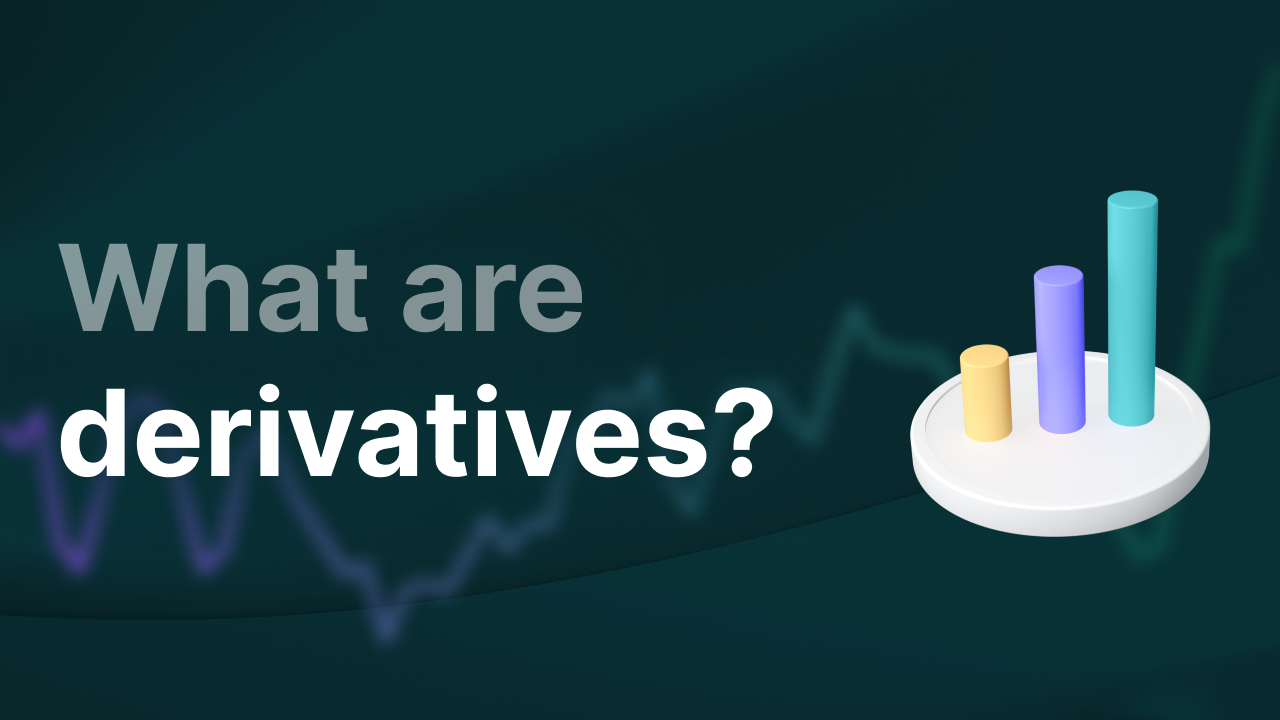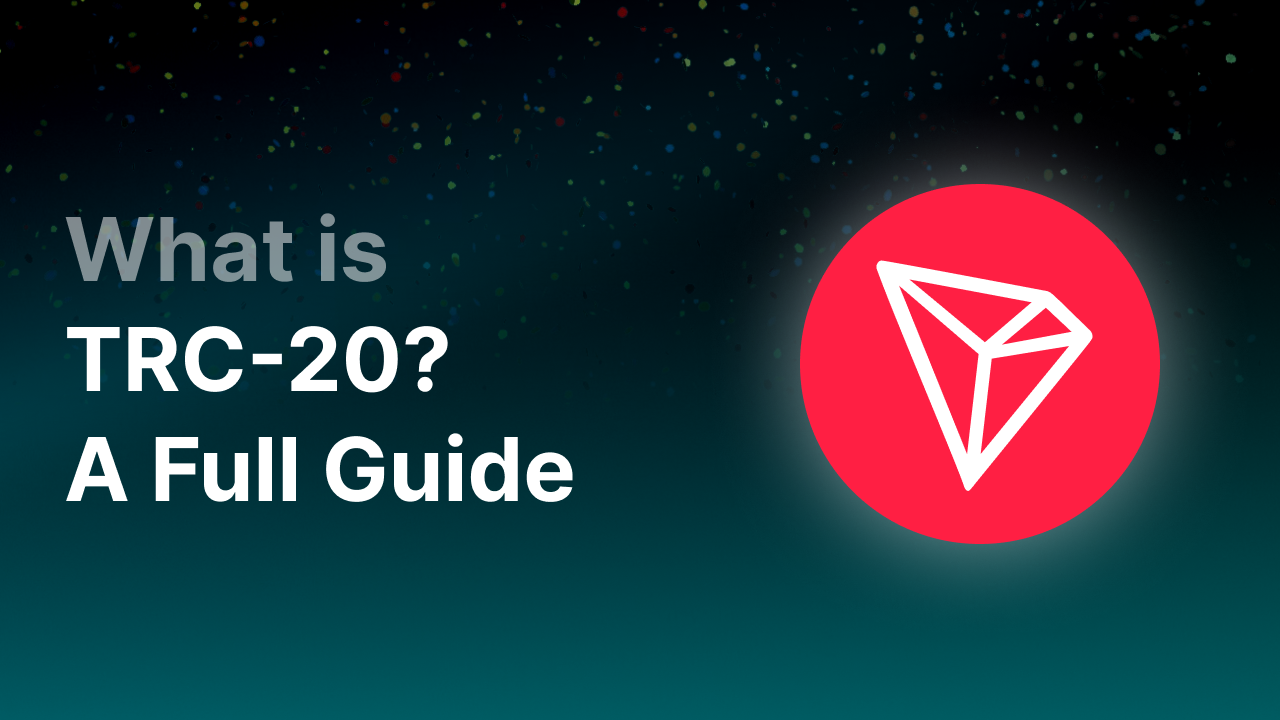Understanding Derivatives: What is it and how does it work?

What are derivatives?
A derivative is a financial contract whose value is derived from a so-called asset, such as a stock, cryptocurrency, commodity, currency or index. Instead of buying or selling that underlying asset directly, with a derivative you make some kind of agreement about its value at a later time. So you're basically buying the right to a certain price. Derivatives are used to reduce risk.
Derivatives can be sold or bought in different ways, usually it goes through exchanges, sometimes it can also go over-the-counter (also called OTC). OTC means that it is traded between two parties.
The value of a derivative changes with the price of the underlying asset. This makes derivatives flexible; investors use them to reduce risk in a falling market, for example. Sometimes they are also used to speculate, and thus make a profit.
Example: Suppose you expect the price of oil to rise, but you don't want to buy and store barrels of oil. Instead, you enter into a contract that gives you the right to buy oil at the current price, at a later date. If the price of oil does indeed rise, you can sell the contract for a profit. If the price actually drops, you suffer a loss. The contract itself is the derivative, and oil is the underlying asset.
Derivatives are also widely used by companies that want to take less risk. For example, an airline may use a derivative to hedge against rising fuel prices. That way they can be sure they won't have to pay more than a certain amount even if the market price rises.
Trading derivatives carries risks, especially with OTC contracts. These are negotiated privately and are less regulated, making it more likely that one of the parties can default on its obligations. Still, there are ways to mitigate this risk, such as using specific derivatives that fix exchange rates or interest rates.
Key Takeaways.
- Derivatives are financial contracts whose value is derived from another asset, such as crypto, equities, currency or commodities (underlying asset).
- They are used to hedge risk or speculate on price changes in the underlying asset.
- There are veer different types of derivatives: options, futures, swaps, CFDs and FRAs, each with its own operation.
- Advantages of derivatives are risk reduction, leverage, access to new markets and profit opportunities when prices fall.
- Disadvantages are that they are complex financial products, it is difficult to estimate value and can involve large losses.
Why are there derivatives?
Derivatives were actually developed to reduce exchange rate risks in international trade. Companies that traded goods internationally needed a way to protect themselves from troubled financial markets. After all, the Euro or the Dollar is also constantly changing in price.
Example: Suppose a European investor buys shares of an American company through an American stock exchange. The purchase is made in US dollars (USD), while the investor keeps his share in euros (EUR). So this means that the investor is at risk if the euro rises against the dollar. His profit (or loss) on the shares is then affected by the exchange rate, regardless of the price development of the share itself.
Derivatives can help in such a situation. For example, the investor can use a currency derivative to hedge the exchange rate risk. In this way, he knows for sure what his final return in euros will be, regardless of the movement of the dollar exchange rate.
On the other hand, derivatives can also be used to speculate. Suppose an investor thinks the euro is going to rise against the dollar. Instead of buying currency, he can use a derivative that increases in value when the euro strengthens. That way he can make a profit without having to own the currency itself.
Companies hedge themselves in
Think of a currency derivative as a kind of insurance against exchange rate fluctuations. For example, a company that pays in dollars but receives revenue in euros can hedge itself with a derivative. Does the dollar suddenly rise sharply in value? Then the derivative compensates for this difference, so the company is not unexpectedly more expensive.
Derivatives are thus not only a way to reduce risk, but also provide opportunities to profit from market movements without actually owning the underlying assets.
Types of derivatives
There are several types, including some well-known derivatives:
- Options
- Swaps
- Futures
- CFD (Contract For Difference)
- FRA (Forward Rate Agreement)
These are the most well-known derivatives.
What is an option?
An option is a right (not an obligation) to buy or sell an asset at a (often) predetermined price within a certain period of time. In other words, it is an option to go into to buy or sell it.
Options are often used to protect your investment or to gamble on the price of something. For example: suppose you own 100 stocks that are now worth $50 each, but you think the value is going to rise. Still, you want to protect yourself from a decline. Then you can buy a put option (an option you are allowed to sell). That's a kind of insurance that lets you buy the right to sell your shares for $50, even if the price has fallen in the meantime.
Suppose the stock price drops to $40. Thanks to that put option, you can still sell for $50. The option did cost you $2 per share, and since one option contract is valid for 100 shares, so you paid $200. But that's still better than losing $1,000 if you had done nothing.
The other way around is also possible. Suppose you don't own any shares yet, but you think the price is going to rise. You then buy a call option (an option you are allowed to buy). That one gives you the right to buy those shares for $50, even if they become worth, say, $60 after that. Again, you pay $2 per share, so a total of $200 for the contract. If the price indeed rises, you can buy those shares cheaply and sell them for the higher market price. That's how you make a profit. After deducting what you paid for the option, you are left with a nice profit.
In both cases, the seller of the option must deliver if you want him to. But if the price does not move in your favor, you simply let the option expire and the seller loses nothing. The seller keeps the premium (the money you paid for the option).
What are futures?
A future is a kind of agreement between two parties to buy or sell a certain amount of crypto at a pre-agreed price in the future. Sounds a bit like gambling, and actually it is.
The idea is simple: you think the price of, say, Bitcoin is going to rise or fall, and you enter into a contract on that. It then doesn't matter what the price really becomes at that point, you just stick to the deal.
There are two types of crypto futures:
- Long: you think the price is going to rise.
- Short: you think the price is going to go down.
Suppose: you go long on Bitcoin via a futures contract, you actually think the Bitcoin price will rise in the future. In crypto world we call this: Going Long. So suppose you say you buy Bitcoin in 1 month for $30,000, and Bitcoin then rises to $35,000, so you have $5,000 profit. If Bitcoin drops to $25,000, you lose $5,000.
Leverage
Futures are often leveraged, which means you can take a larger position with a smaller deposit. Of course, the risk is then also significantly higher. For example, you can trade with $1,000 and 10x leverage as if you had $10,000. You increase your profit but also your risk. After all, you can lose your entire deposit.
Summarized:
- Futures are contracts to buy or sell crypto later at a fixed price.
- You can make a profit if you predict correctly, or a loss if things go the wrong way.
- Often you use leverage, but that makes it extra risky.
- You usually don't have to actually own the crypto.
What is a Forward Rate Agreement (FRA)?
A Forward Rate Agreement (FRA) is an agreement between two parties about an interest rate that will apply in the future. A FRA is actually a kind of bet on interest rates: you agree today what the interest rate will be on a loan or investment that doesn't start until later. This way you can protect yourself against interest rate changes (or speculate on them if you think you know what will happen).
Example: Suppose you are a business and you know that in three months you will have to take out a loan for a certain period of time. You're worried that interest rates will go up by then, making you more expensive. What do you do? You take out an FRA that already establishes now what interest rate you will pay in three months.
If the interest rate does indeed rise then? Great! You just pay the lower rate you agreed on beforehand. If the interest rate falls? Too bad, you'll pay more than you should have. But you take that risk in exchange for security.
What should you remember about FRAs?
- You agree on an interest rate now that will apply in the future.
- You are hedging against fluctuations in interest rates.
- It's purely about the difference in interest rates: no actual loan is made through the FRA.
- They are widely used by companies, banks and investors who are sensitive to interest rate movements.
FRAs are not easily encountered in crypto, but they are very common in traditional finance, especially when large amounts and interest rate derivatives are involved.
What are Swaps?
A swap is a financial derivative in which two parties agree with each other to exchange certain flows of money. The most common example is an interest rate swap, where, for example, one party exchanges a floating interest rate for a fixed interest rate (or vice versa). Swaps are used to manage risk and are thus common in the world of investors or financial institutions.
Example: Suppose Company A borrows $1,000,000 and pays a variable interest rate on it, currently 6%. But Company A worries that interest rates might go up, suddenly making borrowing much more expensive. Or maybe Company A is working with a bank that says, "As long as you have that variable interest rate, you won't get any extra credit.
So what does Company A do? They agree on a swap with Company B. Company B is willing to swap interest payments with Company A, Company A is going to pay a fixed interest rate of 7%, and Company B pays them the variable interest rate (which is now 6%). So they exchange their interest rates with each other, so to speak. In this case, Company A pays the 1% difference to Company B.
What if the interest rate changes?
- Suppose the variable interest rate falls to 5% → then Company A has to pay the 2% difference to Company B (because they still get 7% from Company A).
- Suppose the interest rate rises to 8% → then company B actually pays 1% to company A.
Either way: company A has achieved their goal. They have practically converted their variable rate loan to a fixed rate of 7%. So more predictable, and less risk.
Swaps can do more than just swap interest rates
You can also swap risks related to currency (currency risk), failure to repay a loan (credit risk), or even cash flows from mortgages.
Swaps on mortgages were especially popular for a while, actually too popular. Because exactly these types of swaps, and the risk that your counterparty will not honor its agreements (counterparty risk), played a big role in the 2008 credit crisis.
What is a Contract for Difference?
A Contract for Difference, or CFD, is an investment product that allows you to speculate on the price movement of an asset without actually owning it. Simply put, you enter into a contract with a broker where you pay the difference in price between when you get in and when you get out.
With a CFD you can take advantage of both rising and falling markets. Do you think something is going to rise in value? Then you go long. Do you expect it to fall? Then you go short (as described earlier). You make (or lose) money based on how well your prediction turns out.
Example:
Suppose you think the price of Bitcoin is going to rise. Bitcoin is now at $30,000 and you open a CFD position ‘long’ (i.e. you are betting on a rise). You bet on 1 Bitcoin.
- A week later, Bitcoin is at $32,000.
- The difference is $2,000.
- So you've made $2,000 profit without ever having actually bought Bitcoin.
Another way it works too:
- Suppose the price drops to $28,000 instead of rising.
- You then have a $2,000 loss because you were on the wrong side of the move.
Note that with CFDs you often work with leverage. Like Futures, that means you can take a larger position with a small amount of money. Sounds attractive, but it also increases your risk. Losses can add up just as quickly as gains.
Pros and cons when using derivatives
Disadvantages of derivatives
While derivatives can be useful for protection or speculation, they also come with risks. Listed below are the main disadvantages:
-
Difficult to determine value The value of a derivative depends on the price of another product. Especially with complex derivatives or contracts traded off-exchange (OTC), it can be difficult to determine exactly what they are worth.
-
Risks with OTC With OTC derivatives, you run the risk that the other party to the contract will not fulfill its obligations, such as bankruptcy.
-
Sensitive to multiple variables The price of a derivative can be affected by several factors, such as:
-
The remaining time to maturity
-
Interest rate movements.
-
Costs such as the mark-up or financing of the derivative This makes it difficult for a derivative to move exactly with the underlying product.
-
No intrinsic value A derivative has no intrinsic value, it is purely derived from something else.
-
Heverage Many derivatives use leverage. This involves risk, and even experienced investors can suffer dangerously large losses.
Advantages of derivatives
Derivatives have benefits, of course. Here are the main ones:
-
fix interest rates or prices You can fix a price or interest rate in advance. So you can, if you play it right, make money on a falling market.
-
Risk spreading You can protect yourself against price fluctuations, for example, if you depend on certain commodities or currencies.
-
Use leverage It's a disadvantage, but also an advantage. With relatively little capital, you can take a large position. This increases your profit potential, although it also entails more risk.
-
Diversification Derivatives provide access to markets or strategies that are otherwise difficult to access. This allows you to better diversify your portfolio.
Conclusion.
Derivatives are financial contracts derived from the value of another asset, such as stocks, crypto, currencies or commodities. They are used to hedge risk or speculate on market movements. Well-known forms are options, futures, swaps, CFDs and FRAs. While derivatives offer many benefits (such as protection against price fluctuations, leverage and access to additional markets) they also carry significant risks. Especially when using leverage or OTC contracts, caution is required. An understanding of how derivatives work is therefore essential before engaging in them.


__01KC926A15P1A0X3VR6DBBV1FK.png)

